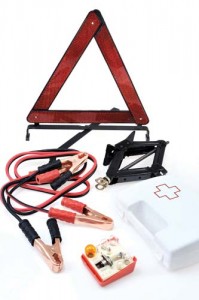 No matter where you drive, you never know when something could go wrong. It could be a flat tire, getting stuck in traffic, an accident, a car break down, or sliding into a ditch on a less travelled road. This is why it is important to always be prepared and part of being prepared involves having an emergency kit.
No matter where you drive, you never know when something could go wrong. It could be a flat tire, getting stuck in traffic, an accident, a car break down, or sliding into a ditch on a less travelled road. This is why it is important to always be prepared and part of being prepared involves having an emergency kit.
Having an emergency kit in your car can be very helpful when you are in a bind. While some people overlook its importance because they rely on road side assistance, the reality is that you never know how long it will take for help to arrive.
“Even if you have road side assistance coverage you may have to wait a while for help to arrive, especially in poor weather conditions,” says Achiel Goossens, the senior manager of auto claims with AvivaCanada. “An emergency kit can help make things more comfortable while you are waiting for help to arrive.”
While there is no limit to what items you can include in your emergency kit, there are a number of things that Goossens suggests you need. These items include:
• A cell phone (if you don’t carry one with you);
• A first aid kit;
• Bottled water and snacks;
• A blanket, gloves, and additional warm clothing for the winter months;
• Flashlight and batteries;
• Tire gauge and jumper cables;
• A small tool kit.
This is a minimum. Depending on your specific situation, you may include other items based on your driving frequency and the climate where you drive.
Regardless of how often and where you drive, having an emergency kit is common sense. If you don’t have one already, investing in one is not only important, it could be a lifesaver. More detailed information is available from your insurance broker or at AvivaCanada.com.
– By Glenn Cooper (NC)


